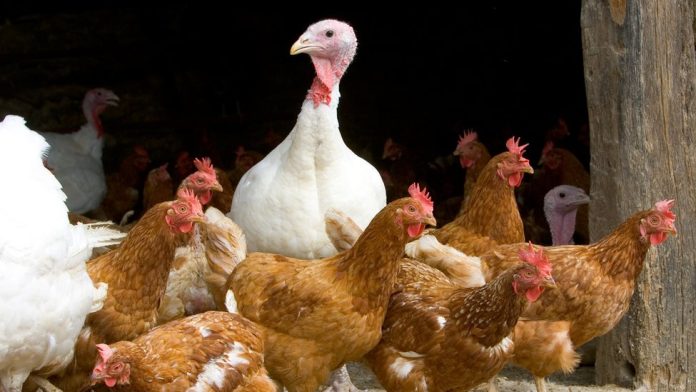
Around January of last year, birds across the US, from South Carolina to New Hampshire, started dropping dead. Geese, ducks, even eagles were being killed off by a deadlier-than-usual bird flu, called H5N1, which had already wreaked havoc across much of Europe and Asia.
Today a type of highly pathogenic avian influenza (HPAI) — has led to the deaths (through both infections and cullings) of a record-breaking 58.2 million farm birds nationwide, including turkeys and chickens. It’s one of the big reasons that egg prices soared in 2022.
In addition to killing an unusually high number of both wild and domestic birds, this bird flu has also infected at least six people worldwide, including one patient in the US who suffered mild symptoms. But, so far, there’s no evidence that the virus can transmit from person to person, which is why experts continue to stress that the risk to the public is low — for now.
“That’s the tricky thing about avian influenza viruses — they mutate very fast,” veterinarian and poultry expert Thainá Landim de Barros, an assistant professor at The Ohio State University, told Insider.
Here are three key charts to help you make sense of where the bird flu outbreak stands right now, and where it could be headed next.
This bird flu has spread with alarming efficiency across the entire country
Since January 2022, bird flu has been identified in poultry in 47 US states. And all 50 states have recorded cases of the illness in wild birds, according to the Centers for Disease Control and Prevention.
This bird flu outbreak is staggering in comparison to previous US outbreaks when it comes to both the spread, and the devastation. Already, the 2022-2023 outbreak has killed 8 million more poultry than the once-record-breaking 2014-2015 bird flu outbreak did. That bird flu season had been considered as “arguably the most significant animal health event in US history” by the USDA. Since then, there have only been two much smaller highly pathogenic bird flu outbreaks, each responsible for the deaths of fewer than 500,000 domestic birds across a total of five states combined.
“This particular strain of the virus has adapted to affecting poultry and causing very severe disease,” veterinarian Julie Gauthier, assistant director of poultry health at the USDA, said during a bird flu briefing in September. Most chickens who get it will die, and die quickly.
This bird flu has also spread to at least 16 different mammal species, including humans
Mammal-to-mammal transmission of H5N1 was recently recorded between mink on a farm in Spain, and the virus has also likely been transmitted between seals in the US, suggesting that it’s possible this virus could be a few key genetic changes away from something with pandemic potential for people.
In the US, the virus has been found in at least 16 mammal species including red foxes, skunks, raccoons, and even a bottlenose dolphin and black bear.
Many of the mammals that have contracted bird flu feast on wild birds, or come in contact with them regularly in the wild.
Leading bird flu expert Richard Webby, an infectious disease researcher at St. Jude Children’s Research Hospital, says “there does seem to be an increase” in the sheer number of mammals across the US and Europe getting severely ill with this particular bird flu.
“It does look like this one is a bit nastier, and a little bit more able to cause severe disease in these scavenging mammals,” he told Insider, explaining that there is often a “large amount of virus” found in the brains of mammals who’ve died with H5N1.
We’re not even at the peak of bird flu season just yet
Highly pathogenic bird flus aren’t new. Since 2005, scientists have reported more than 18,600 outbreaks of bird flu to the World Organization for Animal Health (WOAH). This particular strain of bird flu was first identified in a goose in 1996.
According to the WOAH, bird flu “spread is lowest in September, begins to rise in October, and peaks in February,” which means it’s possible we haven’t seen the worst of this season’s bird flu fatalities yet.
For now, if you see birds exhibiting tell-tale symptoms of the flu, like coughing, sneezing, purple bruising, or staggering around, don’t touch them, and don’t let your pets nibble on bird carcasses either. Contact local wildlife authorities if you see birds acting weird, or spot dead ones lying around.
“Just leave wild birds, and also mammals, where they are,” de Barros said. If you keep chickens or turkeys in your backyard, be on alert for signs of the virus, which can also include swelling in the head and in the legs, nasal discharge, and diarrhea.












